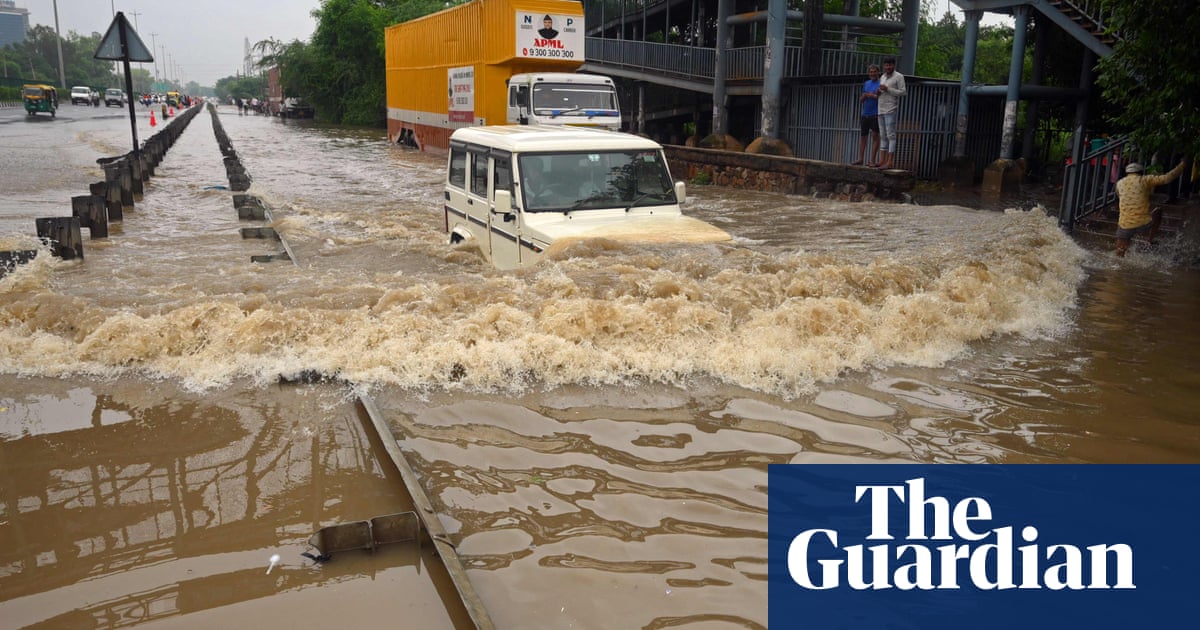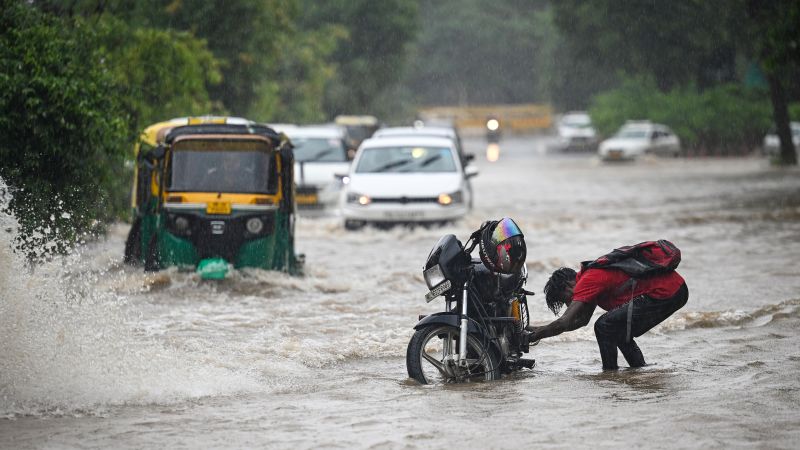New Delhi is currently facing the devastating consequences of heavy rainfall, which have set off floods and landslides across the region. The capital city, New Delhi, encountered its wettest July day in over forty years, resulting in widespread chaos and death. With the meteorological department estimating more rain in coming days, the circumstance stays critical.
Also Read: Fort Worth: At least 3 dead and 8 injured in Texas shooting
New Delhi, India’s bustling capital, was severely inundated after receiving a staggering 153mm of rain within a 24-hour period, marking the highest July rainfall in 40 years. Therefore, various streets were lowered under knee-deep water, devastating transportation system and causing immense inconvenience to residents. Authorities, dreading further rainfall, speedily requested the closure of schools to guarantee the safety of students.

Sources about Floods in July Around the World (For R&D)
- China floods: Xi Jinping urges action as rains kill 15 and displace thousands
- At Least 1 Dead as Heavy Rains Set Off Flash Flooding in New York
- Mongolia – Floods
- Assam Floods: About 18,000 People Suffer From Terrible Flood In Dhemaji District
- At least 50 dead in Pakistan monsoon floods since end of June
The Death Toll and Damages in the New Delhi Floods
The toll of the rainstorm extended past New Delhi, with reports showing that 15 individuals lost their lives in floods and landslides across six states in northern India. Hill states like Himachal Pradesh endured the worst part of the calamity, with six fatalities and roughly 700 roads blocked by landslides. The situation remains critical, as heavy rain is expected to persist in the region, hampering rescue and relief operations.
Scientists have long cautioned about the effect of climate change on the monsoon season in South Asia. The ongoing disaster fills in as a terrible sign of these expectations. Climate change has heightened the rainstorm, making it more grounded and more stronger.
Also Read: Tragic Bus Crash in Mexico Claims the Lives of 29 People
While the monsoon is a crucial source of annual rainfall, providing 70-80% of South Asia’s precipitation, it also brings destruction in the form of flooding and landslides. The changing rainfall patterns and increased frequency of extreme weather events are indicative of the climate crisis unfolding before our eyes.
The floods have exposed the weaknesses of infrastructure in northern India. Deficient drainage systems and outdated metropolitan arranging exacerbated the effect of the heavy rainfall in New Delhi, leading to waterlogging and transportation disruptions.
The situation is critical in low-lying regions along the Yamuna river, where around 37,000 individuals dwell. Infringements on the river floodplain have additionally aggravated the risk of flooding. Efforts must be made to strengthen infrastructure resilience and develop effective flood mitigation strategies.
Also Read: Israeli Military Major Operation in Jenin, West Bank, 9 Killed
Because of the emergency, the Delhi government provided a flood warning and urged residents living close to the Yamuna river to clear and look for more secure areas. Quick response teams have been conveyed to bring issues to light and help weak communities.
These measures highlight the requirement for disaster preparedness and proactive preparation. Government at all levels should put resources into infrastructure, early warning systems, and local area versatility projects to limit the effect of future monsoon-related disasters.
Also Read: Taliban’s Ban on Women’s Beauty Salons in Afghanistan


/cloudfront-us-east-2.images.arcpublishing.com/reuters/KJ2BE26Z6NLEVNVMMNURFUC72I.jpg)

